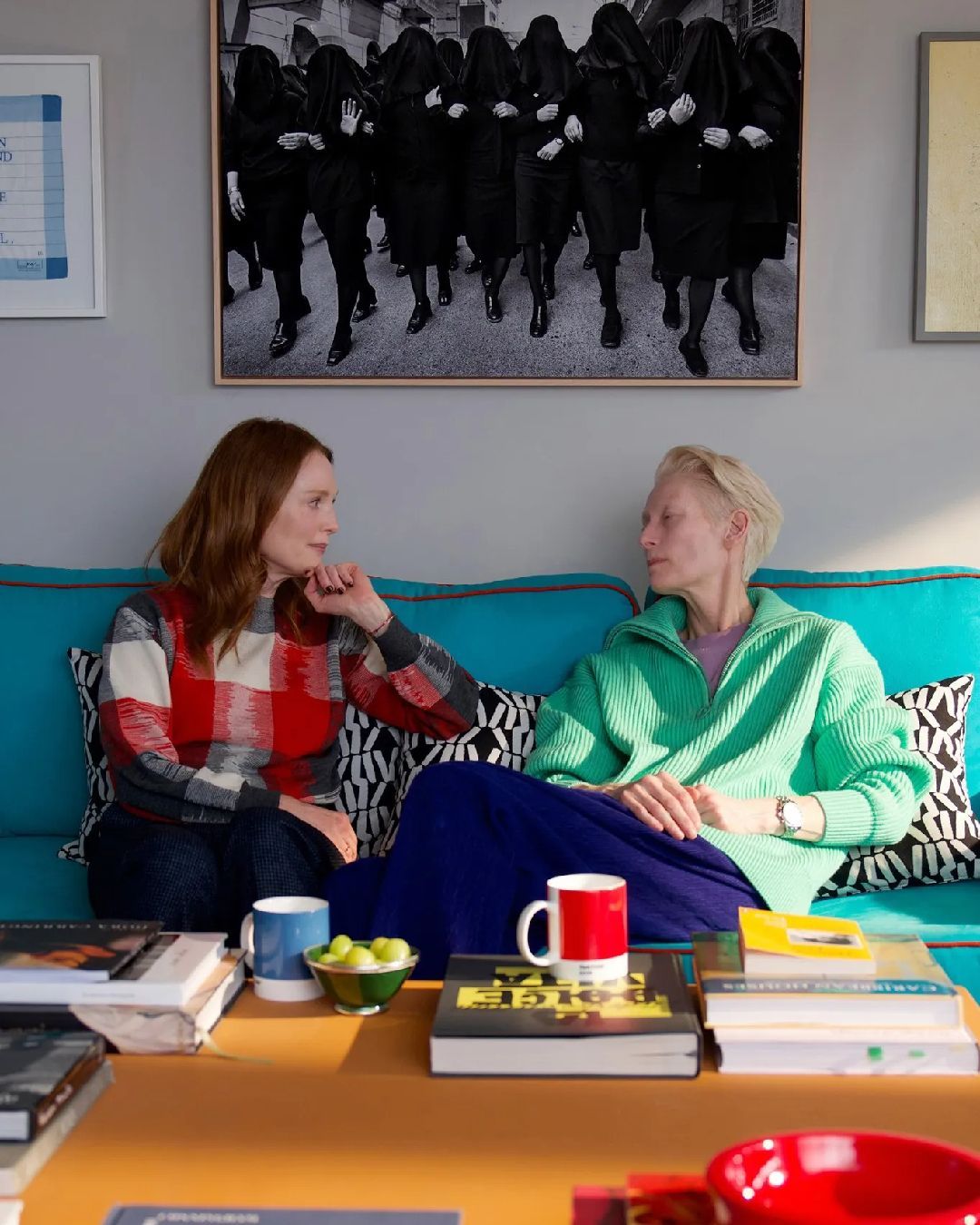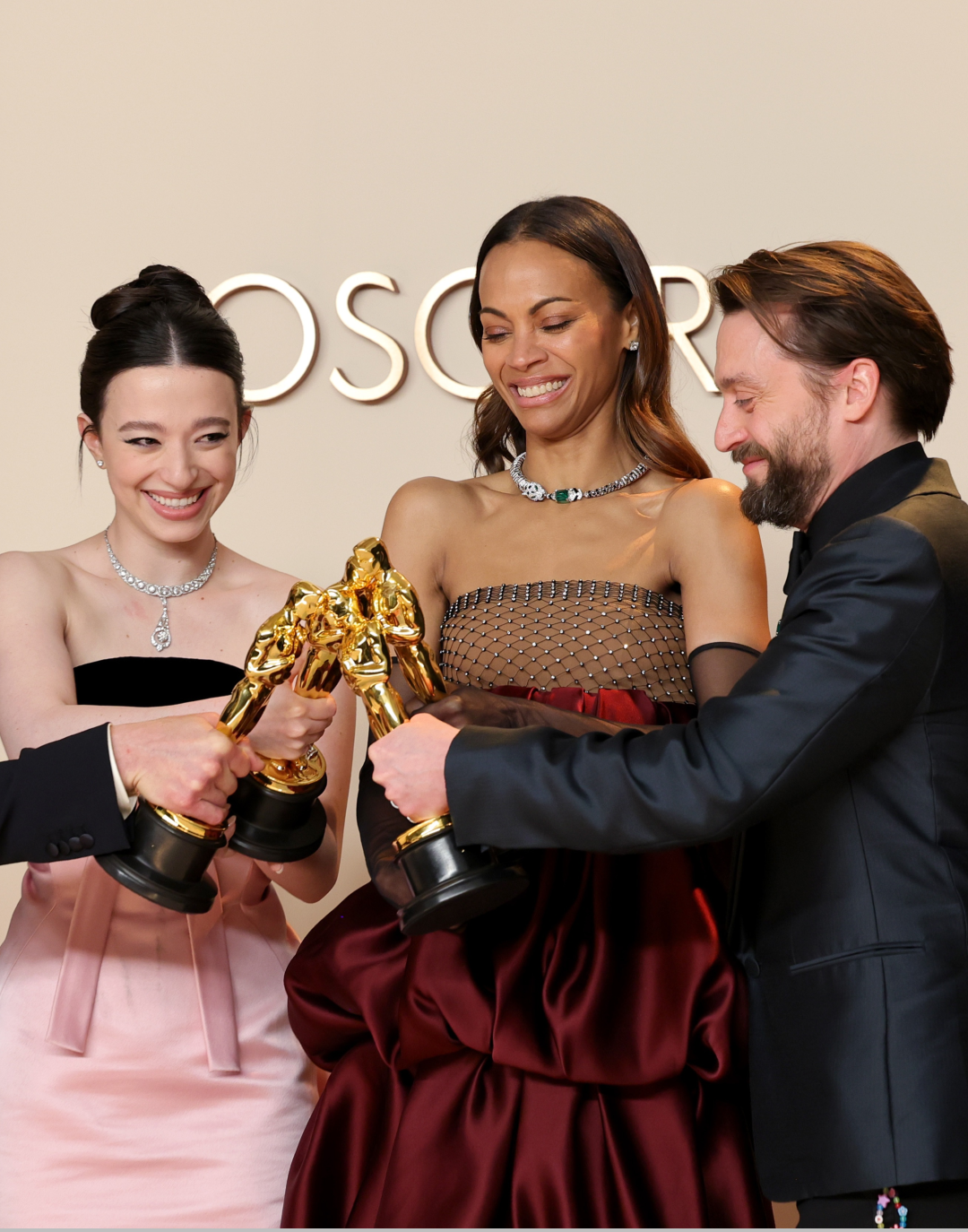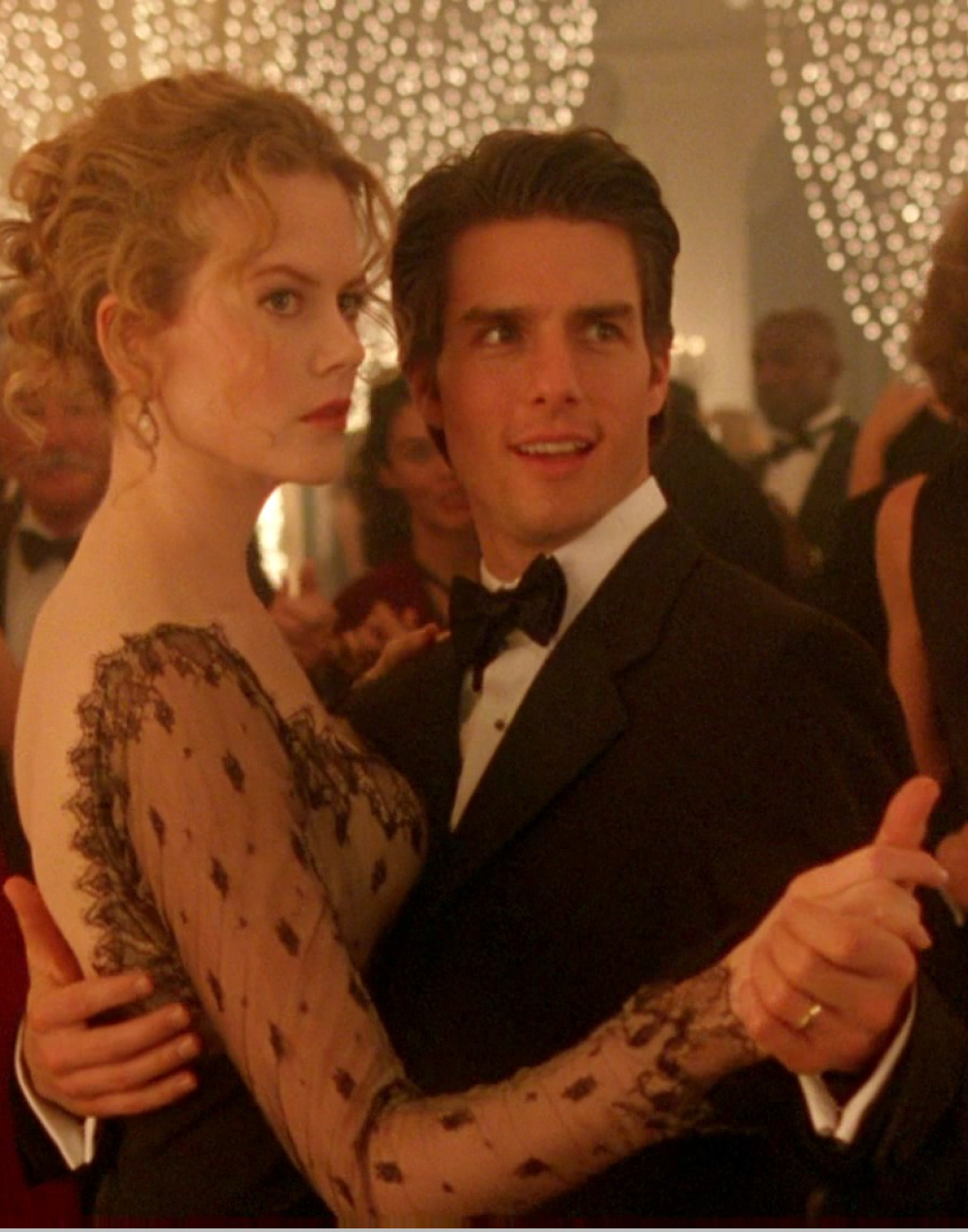
There's some film in this product placement Modern practices of advertising in audiovisuals, from Pedro Almodóvar to Emily in Paris
There is a scene in The Room Next Door by Pedro Almodóvar, Golden Lion at the 81st Venice Film Festival, where the camera captures in full screen a small box filled with doodles signed Dolce&Gabbana. The object is functional, one of the protagonists - the stunning Julianne Moore and Tilda Swinton - is looking for an element essential to the story. But it is also true that, although it perfectly matches the red, green, yellow, and blue tones of the Spanish master's film, what many would crudely call a 'product placement' is so obvious that it would be dishonest not to speak explicitly about product placement. Advertising in cinema and TV series is not one of the latest bastions of capitalist gimmicks, belonging to the customs of the seventh art since its early experiments: the first commercial/film shot directly by the Lumière brothers in 1898, Sunlight, focused on the soap of the same name that gave the title to the work, making the pioneers of cinema also the first to establish what video advertising was.
Of course, over the years that level of explicitness has been revised and softened, made hidden and subtle, destined to act in the corners of the viewers' cerebral cortex and send signals without them even noticing. It’s certainly not the case with James Bond’s Aston Martins or martinis, tools of the trade that immediately come to mind when thinking of the character born from Ian Fleming’s pen, but it is equally accurate to note that the more advertising with its products is carefully integrated into the narrative, the less the audience will feel deceived by the dissemination of promotional material. Indeed, it is within the right of every consumer - and viewer - to be informed about how and to what extent a film or TV series is trying to sell them something. And although the laws in this regard are often changing, and in the United States there is no authentic regulation (mainly relying on the Federal Communications Commission and the Federal Trade Commission), there is always a space in the end credits where one is informed about the brands that have tried to sell something to us, whether it's experiences like traveling with airlines or tangible items like the aforementioned Dolce&Gabbana box. The boundary, however, between integration and overlap is something shows like Emily in Paris should increasingly alert us to.
@jamesbond007 5.2 litre twin-turbo V12 engine 715 horsepower Top speed of 211 mphDBS Superleggera – the next evolution of a Bond car from Aston Martin – is available in the Christie's auction to celebrate #60YearsofBond.Fea original sound - James Bond
It’s true that everything can be monetized, as an excellent rom-com like Fly Me to the Moon shows us, but the fact that a sponsor can serve a film or product instead of the other way around should remain an unbreakable truth that must be respected. In Greg Berlanti's film with Scarlett Johansson and Channing Tatum, the protagonist Kelly Jones manages to sell NASA’s idea by making a planet like the Moon commercial. But if every other sentence from Emily or the characters in the Netflix show presents a new must-have product that is then reiterated for the rest of the episode, then perhaps it has not been understood that it’s the audiovisual that should dictate its rules to advertising, not the other way around. It’s also worth remembering the amount of money a production can stumble upon if it makes the right deal: for GoldenEye, BMW spent $3 million to have 007 drive one of its cars, but the return can be equally profitable for those who purchase a spot in a narrative - such as the 70% increase in Hershey's sales the month after the release of E.T. - The Extra-Terrestrial (considering that Mars refused to lend the brand of its M&M’s). However, effective advertising will never work without the proper tailoring within the story, following the three forms of product placement: screen placement when the product is just on screen, plot placement when it is embedded in the storyline, or script placement when it is mentioned by a character. Refinement is everything, but at the same time, it is the most slippery aspect that also determines the quality of the titles. And probably an Emily in Paris with a mini-ad for the Renault 5 shot so crudely is closer to a Don Matteo with an Enel employee as a series member - where characters are taught how to pay their bills online - than to a Christopher Nolan who makes the Hamilton Khaki Pilot Day Date watch an integral part of the plot in Interstellar.
Be careful not to assume that only serials have cruder ways. It's not with much more delicacy that Ryan Reynolds has inserted his own liquor brand Aviation Gin into most of his recent films, acting more subtly in Free Guy where it appears as a pop-up, while in the action movie Red Notice a bottle is shamelessly placed in plain view on a table. Incidentally, he later sold the brand for $610 million to the multinational Diageo: a very profitable investment indeed. But marketing is still marketing and rarely works thanks to the unexpected, as in the case of Back to the Future, where Michael J. Fox wore the famous Nike Bruins because, having replaced the previous actor Eric Stoltz, the costume department had no other shoes in his size, so he filmed in his own (on the recommendation of director Robert Zemeckis, of course). The practice, although on a large scale, is usually the one followed by Man of Steel, which in 2013 saw $160 million enter production coffers thanks to advertising contracts signed with one hundred different companies, all of which ended up in the superhero film.
Buying is the imperative. And apparently, the Lumière brothers already knew this. However, the warning we must now give ourselves is not to accept everything that is offered without at least alerting our critical sense (and as consumers). If we then choose to buy the Primark t-shirt or the limited edition Bridgerton makeup collection, it's entirely up to us and we are free to do so. It’s also true that in 2023, Mattel completely changed the game by catapulting us inside its company - literally, according to the story - with Barbie by Greta Gerwig, elevating its property by not inserting it into the film, but by making it the film itself. After all, who wouldn’t want to live in a world like Barbieland, where everything they sell you is completely free?












































